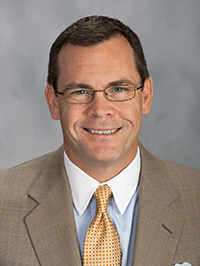The Gold Standard in Program Management: Part 1
 Across the nation, school districts from big cities to outer suburbs face massive and growing needs for capital investment in their facilities. To varying degrees, they are recognizing and responding to these concerns by planning for bond issues, applying for state funding and developing facility master plans. Most districts are only partly aware, however, of the scale and complexity of the challenges they face in implementing these programs successfully.
Across the nation, school districts from big cities to outer suburbs face massive and growing needs for capital investment in their facilities. To varying degrees, they are recognizing and responding to these concerns by planning for bond issues, applying for state funding and developing facility master plans. Most districts are only partly aware, however, of the scale and complexity of the challenges they face in implementing these programs successfully.
The Challenge
School construction or modernization is nothing new; nor are large-scale programs. A mature industry of fundamentally capable program managers exists, including in-house staff in some school district facilities offices and private program-management firms. Some of the latter, in fact, are massive companies, employing legions of credentialed management professionals at various levels of experience and ranging in backgrounds from architecture and planning to engineering and construction management. There is, however, no single professional certification credential needed or available for program management across the U.S. and thus no universal or legally required standards of practice. Instead, the industry generally looks to standards set by related fields such as state licensure in architecture or engineering, or certification by the Construction Management Association of America (CMAA) or, perhaps most appropriately, certification by the Project Management Institute (PMI).
PMI, while focusing most directly on the activities required of a program manager (ranging from the establishment of project goals and stakeholder engagement to the tracking of scopes, schedules and budgets), is not specific to the field of facilities development. PMI’s Project Management Professional (PMP) certification is intended to be equally applicable to endeavors as diverse as information technology software development, commercial marketing campaigns or even space flight. PMP certification carries with it no certain knowledge of the facility design and construction industries as a whole, let alone the nuances within the K-12 education sector. More importantly, while the approaches to program management proscribed by PMI and similar standards emphasize careful planning and highly routinized tracking and management of program metrics toward desired outcomes, they offer little insight into how programs must respond over their lifespan to significant changes in fundamental drivers.
“A program manager today has to balance so many forces external to the building program with the fundamental needs of the educational mission and the constraints of the existing facilities,” said Brian Hanlon, former director of Washington, D.C.’s Department of General Services with responsibility for a $4 billion, 10-year comprehensive modernization of D.C. Public Schools. “Every one of those factors is a constant source of discovery or change.”
Today, school modernization encompasses more changing dynamics and unfamiliar terrain than ever before. The most obvious challenges lie in the “nuts and bolts” of school-modernization needs. Major urban school districts suffer from an excess of aging buildings (ranging from 70 to more than 100 years old), resulting in both enormous backlogs of deferred maintenance needs and major deficiencies relative to modern building codes, which in turn translate to risks in the health, safety and welfare of students, teachers and staff. Meanwhile, districts in urban, suburban and even rural locations are experiencing extraordinary capacity challenges in the form of increasing over-enrollment, under-enrollment or even disparities in both trends across the same district. These facility-based needs are exponentially compounded by the rapidly changing influences on the usual facility design and construction processes.
The Enemies of Success
First and foremost, the enemy of success is politics — to which no public school district is immune and which profoundly affects even private schools in often unpredictable ways. The scoping and prioritization of projects, the equitable allocation of capital funding, the relative importance placed on student-learning needs versus other program goals (such as the economic inclusion of local businesses and workers) and many other elements are inevitable determinants of today’s school modernization program. These elements are not only inherently complex but dynamic and certain to evolve and change over the course of a school-modernization program.
Many cities are experiencing an influx of young millennials, while others continue to suffer population loss that began with the decline of America’s industrial base in the 1960s and ’70s. Other districts, particularly in suburban locations, are booming with not only domestic population growth, but also the added influx of immigrant groups that bring with them cultural and language implications for K-12 education. Demographic changes in some districts are occurring so rapidly that the reality planned for at the outset of a single bond program can be drastically altered by that program’s end.
Perhaps most profound, however, are underlying shifts in educational theory and pedagogy. The teaching approaches that are moving to the forefront of 21st century learning — outcome-based, experiential, inter-disciplinary and collaborative — are so profoundly different from those of the past that most districts’ entire physical plants are inadequate to serve future educational needs. Simply put, it is of only modest benefit to a school district to restore to like-new condition a school building that was built 100, 70 or even 30 years ago, when the modernized school will still deliver only the traditional classroom experience rather than the project-focused, collaborative, technologically innovative spaces needed today and tomorrow.
Chris Dunlavey, FAIA, is president of Brailsford & Dunlavey in Washington. Dunlavey specializes in managing the development of PK-12 schools, major sports venues and higher-education “quality-of-life” projects including recreation and athletic facilities, campus unions, and student or faculty and staff housing.
Read Part 2 of this article, which shares helpful program management solutions, available on July 20 at www.schoolconstructionnews.com.
